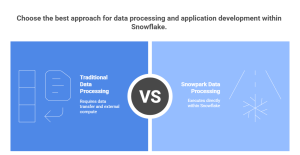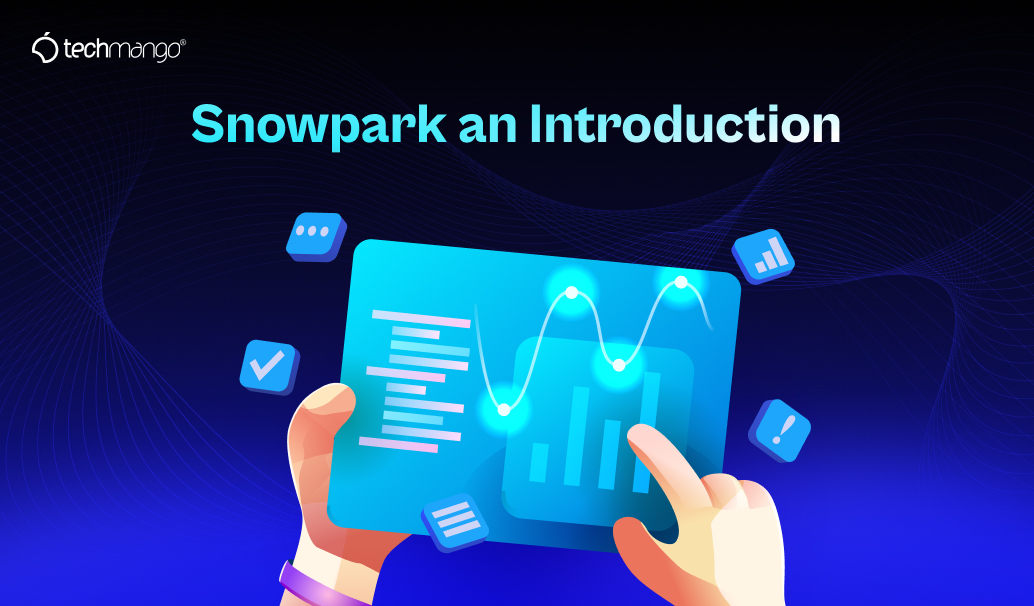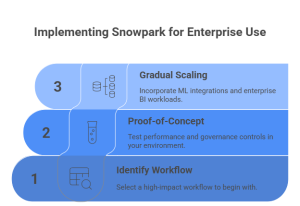What is Snowpark?
Snowpark is a Snowflake extension that lets developers code with familiar programming languages—such as Python, Java, and Scala—while executing directly within the Snowflake engine. Rather than transferring data around or working with independent compute environments, Snowpark moves the processing to where the data is already stored.
For IT managers struggling with data lakes, big data processing, and governance issues, Snowpark eases friction. Developers can create sophisticated applications, data pipelines, and machine learning models all in the Snowflake platform—without having to compromise on speed, scale, or security. For teams already investing in data engineering services, this extension helps reduce complexity and ensures faster value delivery.
Key Features of Snowpark
Multi-language Support for Developers
Snowpark is not SQL-specific. It enables teams to leverage Python for machine learning integration, Java for enterprise workflows, or Scala for high-performance use cases. Companies like yours don’t have to keep individual platforms in place just to accommodate different programming needs.
Simplified Data Pipelines and Workflows
Data pipelines tend to bottleneck when various tools and platforms are strung together. With Snowpark, data transformations, ETL jobs, and business logic are run directly in Snowflake. Fewer moving parts, less data movement, and faster development cycles—an advantage many IT leaders look for when adopting data engineering services.
Security and Governance at Scale
Robust data governance becomes paramount with businesses expanding and regulations becoming more stringent. Snowpark inherits Snowflake’s native security, role-based access controls, and compliance. Whether managing customer information in the USA or money movements in the UAE, you can be sure that governance is uniform for all workloads.
Why Snowpark Matters for Data Engineering Services
Data engineering is all about making raw data available for analytics, reporting, and machine learning. Snowpark directly enters this purpose by:
- Lowering the overhead of managing multiple processing environments.
- Enabling teams to work on business logic rather than infrastructure.
- Permitting scalable big data processing without transferring datasets outside the data warehouse.
For organizations that rely on trustworthy, well-governed pipelines, Snowpark makes development easy while keeping performance at scale.
Real-World Applications of Snowpark
Machine Learning Integration
Training and deploying ML models usually involves pulling data out of systems. With Snowpark, data can be preprocessed, feature engineering can be executed, and one can integrate directly within machine learning integration pipelines within Snowflake. This reduces latency as well as makes the models update on the latest datasets.
Business Intelligence Enablement
Snowpark also accelerates business intelligence efforts by simplifying the way data is prepared for reports and dashboards. BI teams get access to clean, properly modeled data without holding out for slow ETL processes to finish. The payoff? Quicker insights and more reliable decision-making.
Getting Started with Snowpark
Implementing Snowpark does not mean a full overhaul of current systems. Most IT executives start with a pilot initiative—such as bringing one particular data pipeline or analytics workflow into Snowpark—before expanding to enterprise-scale.
At Techmango, we usually suggest:
- Picking out a high-impact workflow to get started with.
- Proof-of-concept testing for performance and governance controls in your environment.
- Scaling gradually to incorporate ML integrations and enterprise BI workloads.

This staged process reduces risk while demonstrating the worth of Snowpark within your business environment.
Conclusion – Unlocking the Future with Snowpark
Snowpark is not an afterthought for Snowflake—it’s a developer platform that assists companies in simplifying data pipelines, enhancing big data processing, and ensuring good governance while facilitating advanced analytics. With smooth machine learning integration and enhanced support for business intelligence, it puts companies in a position to obtain greater value from their data lakes.
At Techmango Technology Services, we assist businesses in embracing Snowpark as an integral component of their overall data engineering services strategy. Your concern may be enhancing governance, augmenting big data workloads, or fast-tracking machine learning adoption. Our experts ensure Snowpark is deployed with your business objectives at the forefront.
Interested in learning how Snowpark can make your data workflows easier? Let’s talk about the optimal strategy for your business.

